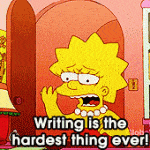If you’re building a blog, WordPress is one of the best platforms on which to do it. This open-source software has transformed how many brands and entrepreneurs build their websites, and it’s constantly improving.
Managing your content is one of the critical elements of running a successful blog.
While you could just have an endless stream of posts listed in chronological order, the best option is to categorize your posts based on keyword research, so it’s easier for your audience to find what they want.
Categories can also make blog management easier since you can restructure your site accordingly.
Although having multiple categories can help you organize your blog more efficiently, you may want to exclude a category from the blog page.
For example, perhaps you have seasonal or timely content you want to remove once it’s no longer fresh or relevant. This guide will help you learn how to exclude categories from the blog page on WordPress.
What are Categories in Blog Posts?
A category is a broad descriptor for a blog post, almost like a keyword tag. For example, if you’re hosting a blog about fashion, some categories could include “women’s clothes,” “children’s accessories,” “shoes,” and many more. The more categories you have, the easier it is to segment your content, so it’s more appealing to your audience.
That said, there are some elements to consider when developing blog categories, such as:
- Number of Categories – While it might seem appealing to create a long list of categories, it’s often better to keep them relatively broad. You can always use keyword tags to help organize your posts more granularly. Otherwise, it becomes harder to manage everything.
- Cross-Categorization – Individual posts might belong to multiple categories. Using our fashion example from above, let’s say you write a piece about how women’s accessories have changed over the years. This post might be part of categories like “fashion history,” “women’s accessories,” and “accessories.” Ideally, a single piece would belong to at most three or four categories.
- Category Management – When starting your blog, you may create many categories based on the content you plan to write. However, these categories may change or shift over time, or you may not get around to making content for some of them. Updating and deleting unused categories can help make your archive more efficient and streamlined.
What’s the Difference Between Tags and Categories in WordPress?
One essential part of blog management is making it easier for users to find archived pieces.
Tags are an excellent way to curate your content, both on the back end and from a user’s perspective.
While a category is a broad descriptor, tags can be much more detailed. For example, let’s say you write a piece for the category “women’s fashion.” Some descriptive tags might include “summer dresses,” “sun dresses,” “sun hats,” “floral prints,” and so forth.
The primary benefit of using tags is that you can find specific content faster. So, while a category like women’s fashion could have 100 blog posts, you can use tags to find a piece about how to accessorize when dressing for the beach.
You can also use tags to help promote content on social media and search engines.
Should I Use Categories or Tags?
Realistically, you should use both to make your blog more organized.
However, it can be easy to get carried away with tags, so try not to make them too long or detailed. Overall, a single blog post may belong to one or two categories and have five or six tags.
As with categories, if you have too many tags, it’s harder to keep track of them and manage your blog as efficiently.
Do Blog Tags Affect SEO?
No, blog tags on WordPress do not affect SEO directly. That is to say that search engines won’t index specific posts based on the tags you use.
However, because tags can make your content more user-friendly, they can help increase web traffic for those terms, thereby improving your SEO ranking.
Are Categories Good for SEO?
Yes, blog categories can help improve your SEO standing for those keywords. They help because they make it easier for search engines to index your pages because they know what each one is about.
The more blog posts within a specific category, the more well-defined it is and the faster that search engines can classify them.
For this reason, creating blog categories based on high-ranking keywords can be a good idea. This way, you can boost your web traffic and improve your site’s visibility overall.
How Do I Add and Remove Categories in WordPress?
This process is super simple and can be done in just a minute or two. After logging into your site’s admin page, you can go to posts – categories. From there, you can add a category name, slug (for your page’s URL), meta description, and choose a parent item.
Once you’ve entered all this information, you can click on “add category.”
If you want to delete an existing category, you just have to hover over it and choose “delete.” WordPress will ask you to confirm the deletion, and once you do, you’re all set!
How Do I Hide Categories on My WordPress Blog?
Although categories can help streamline your blog, one common problem is that sites tend to accumulate categories over time. Also, some categories may work for specific periods instead of long-term existence.
For these reasons, you may want to hide or exclude categories from your blog.
To do this, you’ll need to install a plugin like the Ultimate Category Excluder.
Once installed, you can access it from your settings page and choose which categories to exclude and where. You can remove categories from blog pages, feeds, archives, and even search results within your WordPress site.
Also, the exclusion doesn’t mean you can’t reinstate the category later. This way, you can have a select group of categories that rotate through regularly.
How Do You Assign a Blog Post to a Category?
As with everything else on WordPress, assigning a blog post to a category is super easy.
Realistically, you’ll need to do this when adding new categories to your site because some of your existing content will fit one or more of these new terms.
- To assign a post to a category, first, go to Posts.
- Choose the article you want to assign, and go to the Category section.
- Click one or more checkboxes for the categories you want to assign.
- Finally, click update or publish to finalize everything.
You can also follow these steps to remove blog posts from different categories if you like.
How Do I Show Only One Category in a WordPress Post?
Using the same steps above, you can uncheck all the other categories you don’t want to appear in a WordPress post. This process is helpful if you want to streamline your site traffic and avoid too much cross-contamination between categories.
For example, if a user is looking at blog posts for a specific category, they may want to avoid seeing content that fits into multiple boxes.
How Do I Hide Categories in WordPress WooCommerce?
Because WooCommerce is part of the larger WordPress network, the steps to hiding or excluding categories are still the same but slightly different.
You’ll need to get a plugin built for WooCommerce specifically. Once the plugin is installed, you can pick and choose which categories to hide. You can also look at products within each category and hide those individually if you prefer that method.
How Do I Manage Categories in WordPress?
Over time, you’ll need to manage and update your categories in WordPress for various reasons.
For example, you may want to change the slug to be more SEO-friendly, or you could change the category name. All you have to do is go to Posts – Categories.
Next to each category is an ellipsis – click on that. From there, you can edit and adjust each category as necessary.
What Happens if I Delete a Category in WordPress?
Deleting a category doesn’t affect your blog content. Instead, if a blog post was only assigned that category, it will revert to your “default” category after deletion.
Conversely, if a blog post belongs to multiple categories, nothing will happen to it. The category you deleted will simply disappear from the list, and the post will otherwise be unchanged.
Get Better Content For Your Blog With Rock Content!
Building a successful WordPress blog takes a lot of time, energy, and hard work. However, the key to success is writing top-tier content that will add value to your readers’ lives.
From there, it’s much easier to build an audience and keep visitors coming back for more, again and again.
Rock Content not only delivers high-quality blog posts, but we can also help improve your users’ experience when visiting your site.
Check out our tool Stage here and see how it can transform your blog into a lead generation machine!







